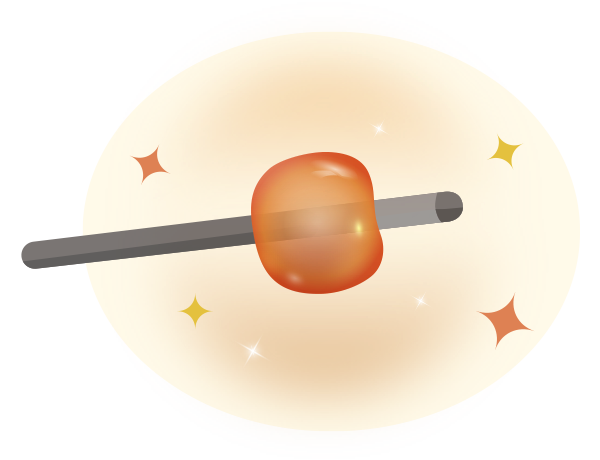Comparing Processing Techniques
Glass is made from silica sand and flux, melted at high temperatures, then cooled to harden into material. By adding "colorants," colorful glass beads can be produced. In ancient times, different regions had their unique production methods, with drawing and winding methods being the most common. Don't underestimate these glass beads. Although small in size, when magnified several times through scientific testing, the surface patterns of glass beads—the traces left during production—become clearly visible, and are important evidence for archeologists to analyze the cultural significance behind glass beads.
-
● Drawing Method
A craft technique developed in South Asia.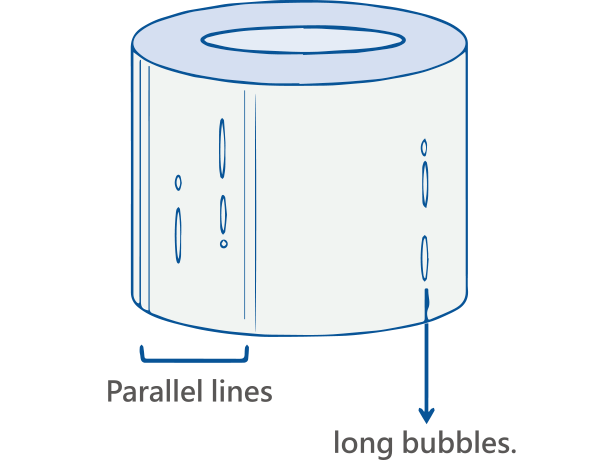
-
● Winding Method
A craft technique widely used in West Asia, China, and other regions, also the primary method for modern glassmaking.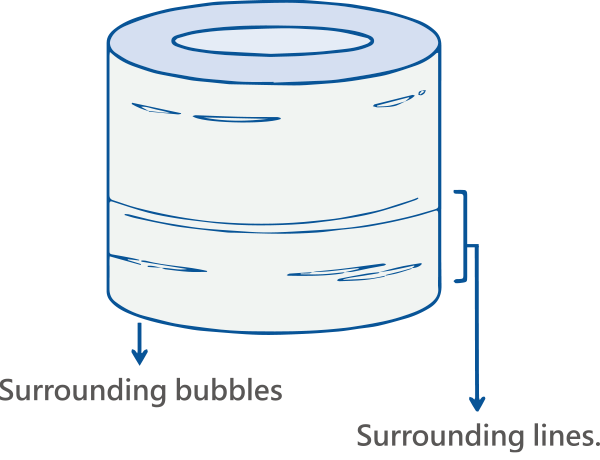
Drawing Method
-
1Craftsmen use a hollow metal rod to melt and shape cylindrical molten glass in the kiln , forming a cone shape.
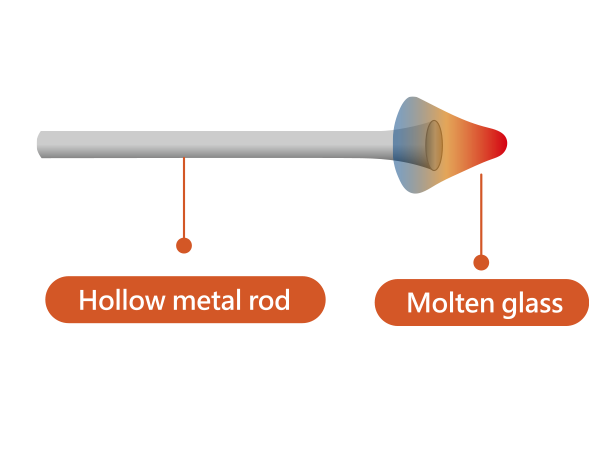
-
2Using a solid metal rod through the hollow one , craftsmen create bubbles in the conical glass.
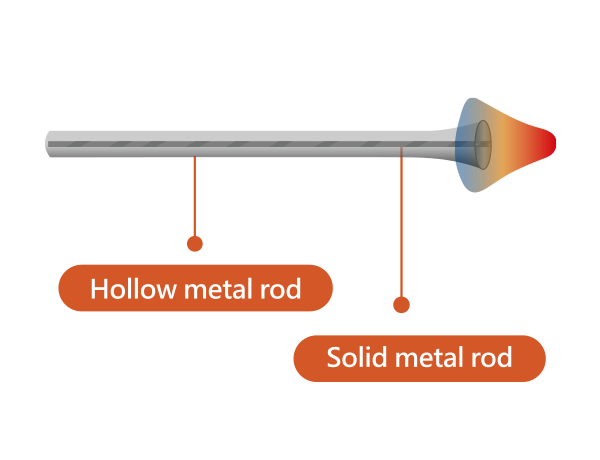
-
3At the other end of the kiln, the craftsman pulls out the glass to form a long glass tube.
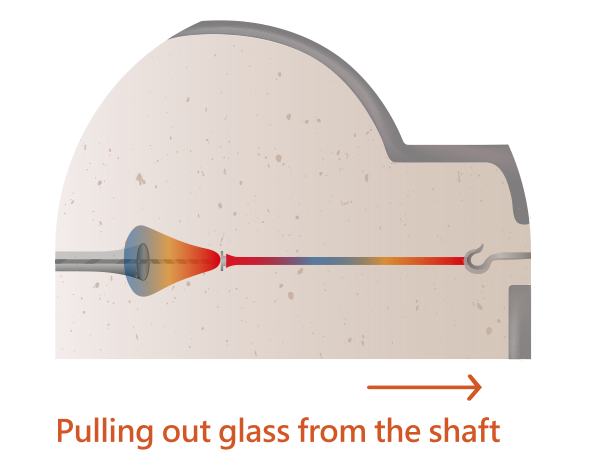
-
4The pulled glass tube is then cut into small glass beads, and the edges are polished to complete the process!
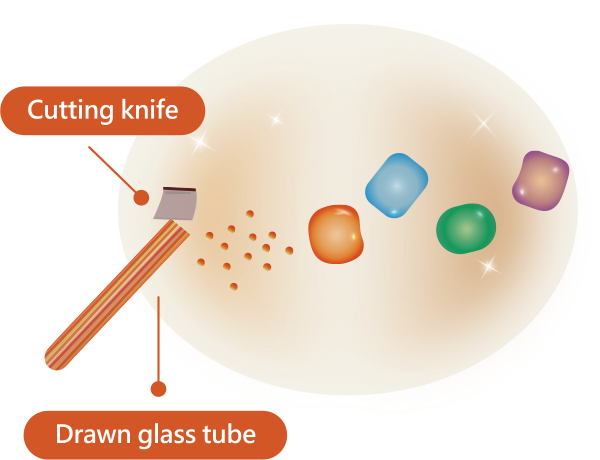
Winding Method
-
1First, the solid cylindrical glass strip is heated until it melts.
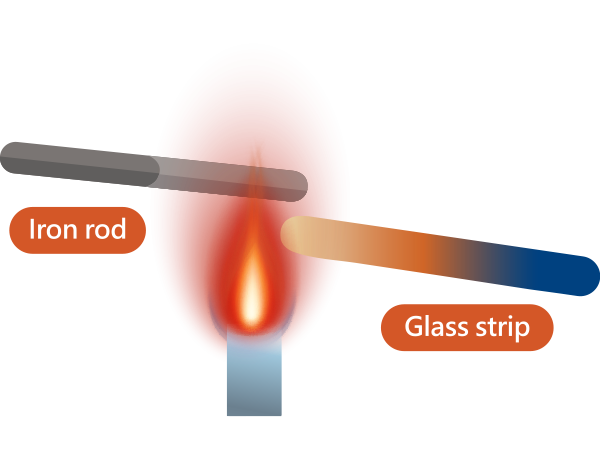
-
2By rotating the iron rod, the melted glass is wrapped around the metal rod.
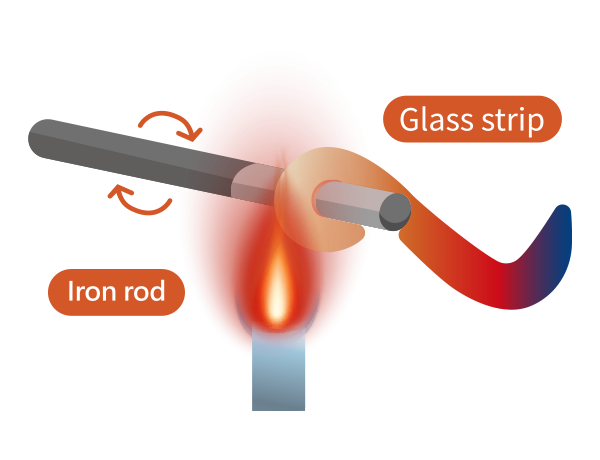
-
3After wrapping a few loops, the glass rod is slowly moved away.
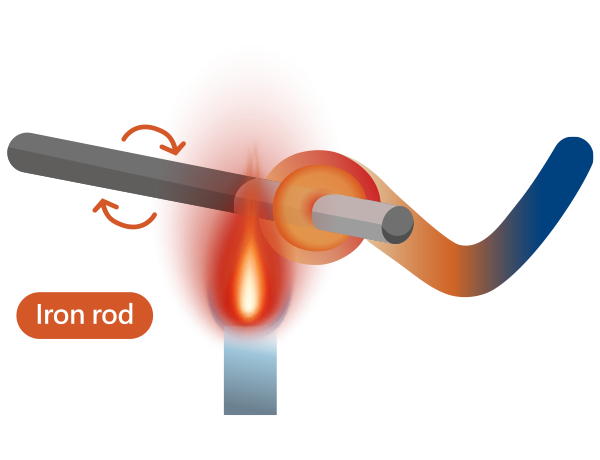
-
4Glass bead is kept away from heat source.
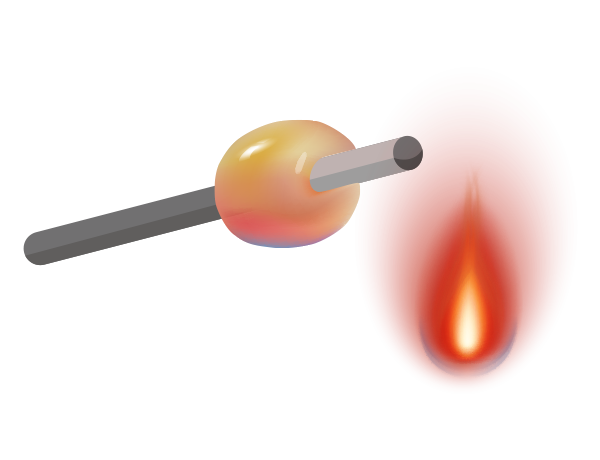
-
5After cooling and shaping, the process is complete!
